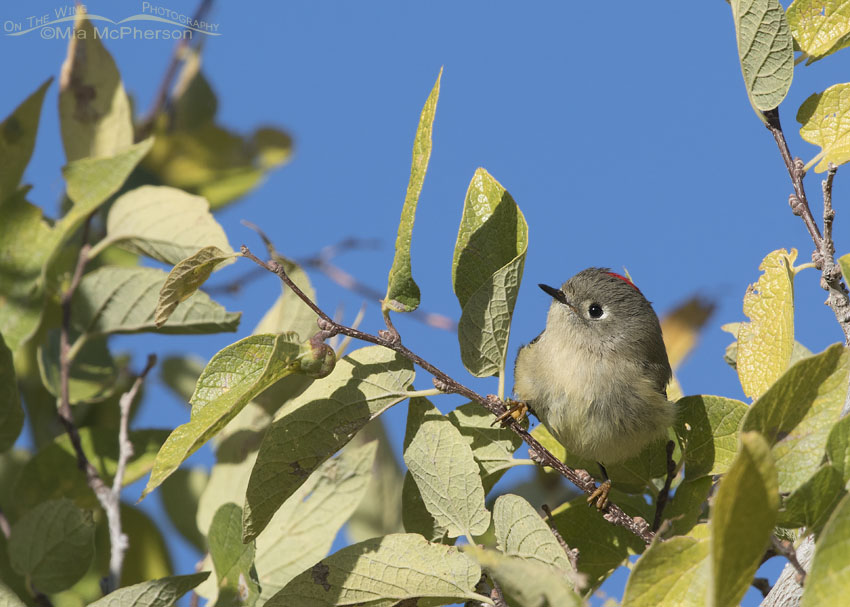 Male Ruby-crowned Kinglet on a bright, sunny day – Nikon D500, f7.1, 1/1250, ISO 400, Nikkor 500mm VR with 1.4x TC, natural light
Male Ruby-crowned Kinglet on a bright, sunny day – Nikon D500, f7.1, 1/1250, ISO 400, Nikkor 500mm VR with 1.4x TC, natural light
Yesterday I saw so many Ruby-crowned Kinglets in northern Utah that it was impossible for me to keep up with them, I am certain I missed some excellent images because of that.
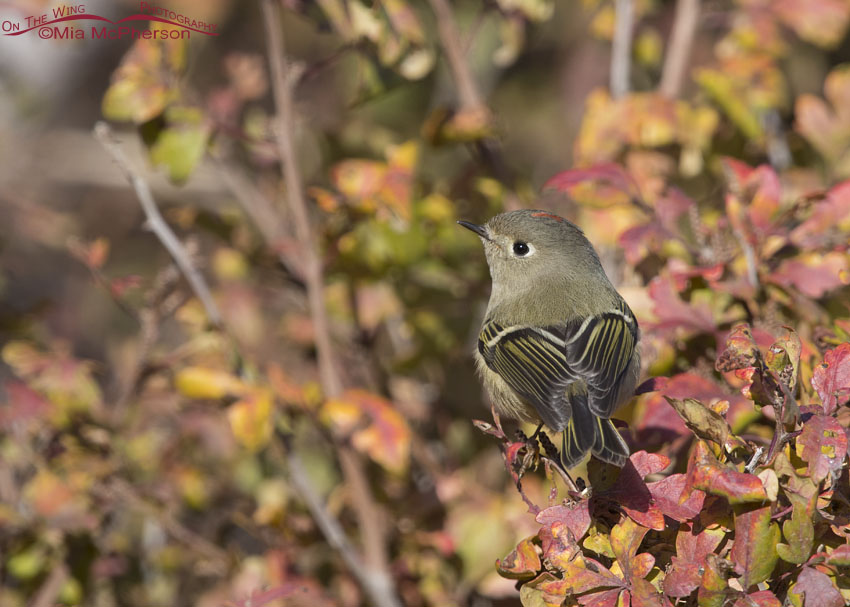 Male Ruby-crowned Kinglet in fall colors – Nikon D500, f7.1, 1/800, ISO 400, Nikkor 500mm VR with 1.4x TC, natural light
Male Ruby-crowned Kinglet in fall colors – Nikon D500, f7.1, 1/800, ISO 400, Nikkor 500mm VR with 1.4x TC, natural light
I was delighted and even charmed to see many of the male Ruby-crowned Kinglets where I could see their ruby-red crowns. My best images of those crowns raised had obstructions in front of the heads of the birds though much to my dismay. Still, seeing the ruby crowns excited me because I’d never gotten images of them showing prior to yesterday morning.
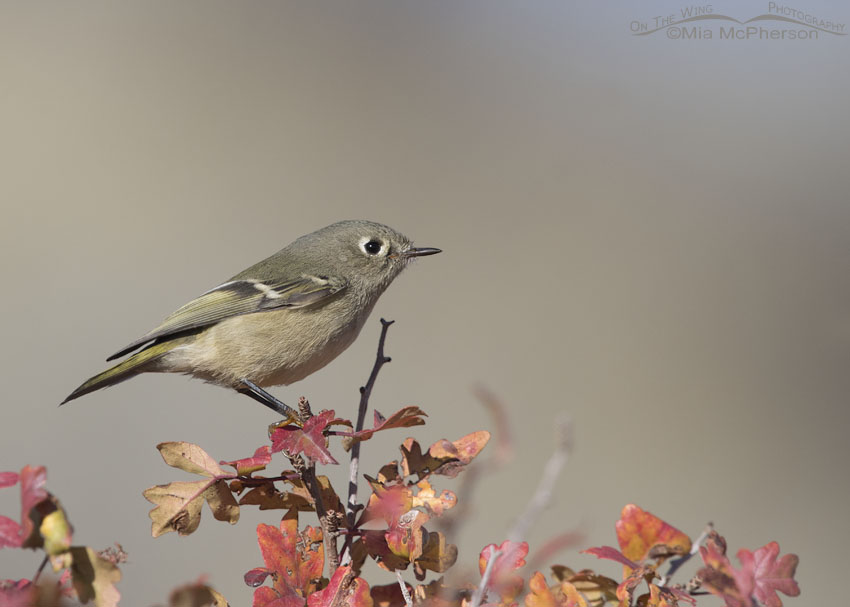 Autumn colors and a Ruby-crowned Kinglet – Nikon D500, f7.1, 1/1600, ISO 400, Nikkor 500mm VR with 1.4x TC, natural light
Autumn colors and a Ruby-crowned Kinglet – Nikon D500, f7.1, 1/1600, ISO 400, Nikkor 500mm VR with 1.4x TC, natural light
These tiny birds along with siskins, gold finches, sparrows and a few warblers were very active while searching for insects in some sumacs whose leaves had begun to turn colors.
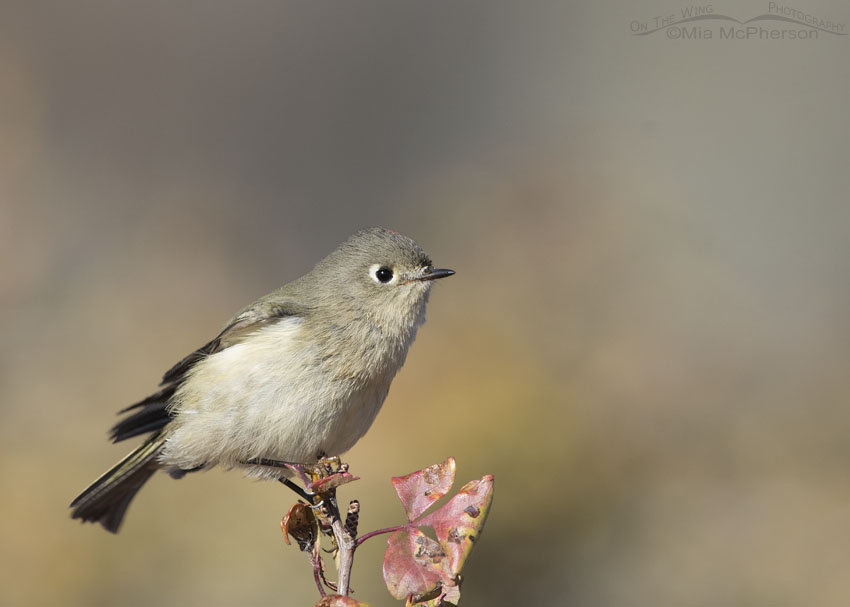 Ruby-crowned Kinglet male perched on a sumac – Nikon D500, f7.1, 1/1250, ISO 400, Nikkor 500mm VR with 1.4x TC, natural light
Ruby-crowned Kinglet male perched on a sumac – Nikon D500, f7.1, 1/1250, ISO 400, Nikkor 500mm VR with 1.4x TC, natural light
These tiny songbirds are constantly on the move and because of that they are very challenging to keep up with while photographing them. Yesterday they popped up on the tops of the Fragrant sumacs quite often and I was happy about that.
According to allaboutbirds.org Ruby-crowned Kinglets only use about 10 calories per day, I do not know how they do that considering how active they are every time I have seen them.
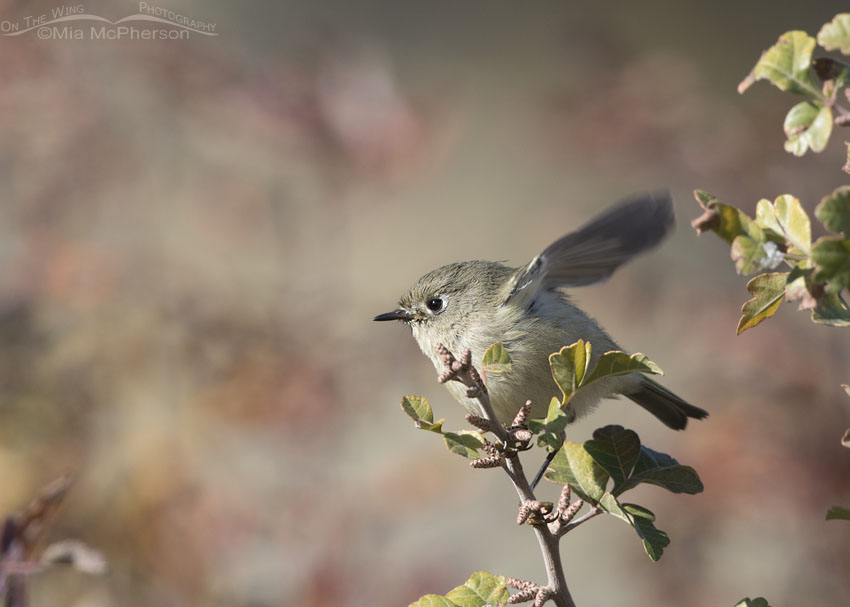 Ruby-crowned Kinglet about to lift off – Nikon D500, f7.1, 1/1000, ISO 400, Nikkor 500mm VR with 1.4x TC, natural light
Ruby-crowned Kinglet about to lift off – Nikon D500, f7.1, 1/1000, ISO 400, Nikkor 500mm VR with 1.4x TC, natural light
During the breeding season Ruby-crowned Kinglets are found in the northwestern parts of the U.S. and across Canada in spruce-fir forests, mixed woods and mountain shrub habitat, during the winter and migration they are found in thickets and woods across the country as far south as Mexico.
In Utah they move down to lower elevations during the winter and back up into the mountains during the summer.
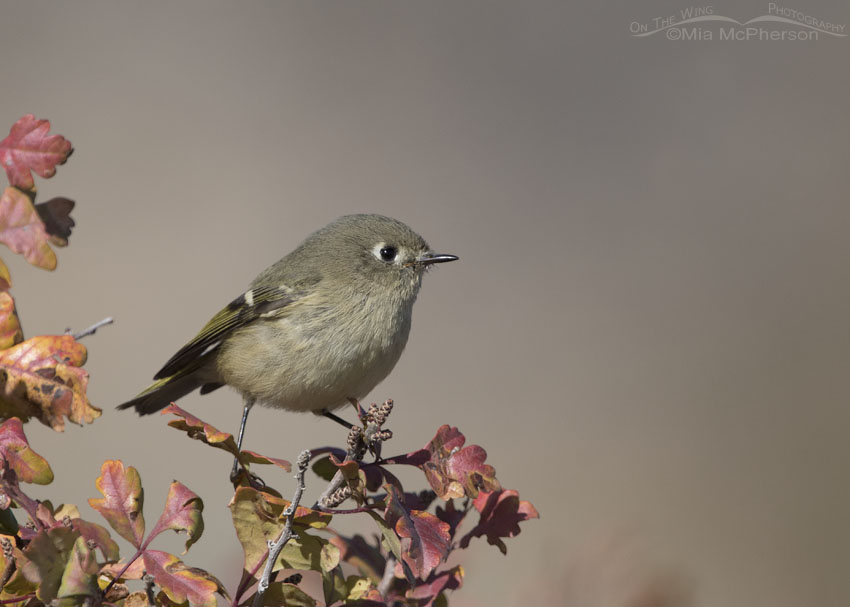 Ruby-crowned Kinglet and ruby-colored sumac leaves – Nikon D500, f7.1, 1/2000, ISO 400, Nikkor 500mm VR with 1.4x TC, natural light
Ruby-crowned Kinglet and ruby-colored sumac leaves – Nikon D500, f7.1, 1/2000, ISO 400, Nikkor 500mm VR with 1.4x TC, natural light
Groups of Ruby-crowned Kinglets can be called a “castle”, “princedom”, “court” and “dynasty” of kinglets. I saw enough Ruby-crowned Kinglets yesterday to call them a “dynasty”, they were the best sightings of my day.
Life is good.
Mia
To view more of my Ruby-crowned Kinglet photos plus facts and information about this species click here.


I just love birds! That is all. 🙂
WOW!, WOW!, WOW! and a string of more WOWs! What a splendid dynasty! And what a stroke of luck (where preparation meets opportunity) that you had such a plethora of opportunities! Again WOW!
Echoing everyone else.
These are just beautiful.
It’s hard to pick a fav from this series of wonderful shots. I can’t imagine how hard it must be to keep up with those little guys. Great work, Mia.
Nice assortment of images on a beautiful day! I think the last one is my favorite.
What a WONDERFUL, WONDERFUL series!!! Tried to pick a favorite but couldn’t! These birds are as cute as a bug’s ear, as my uncle used to say….